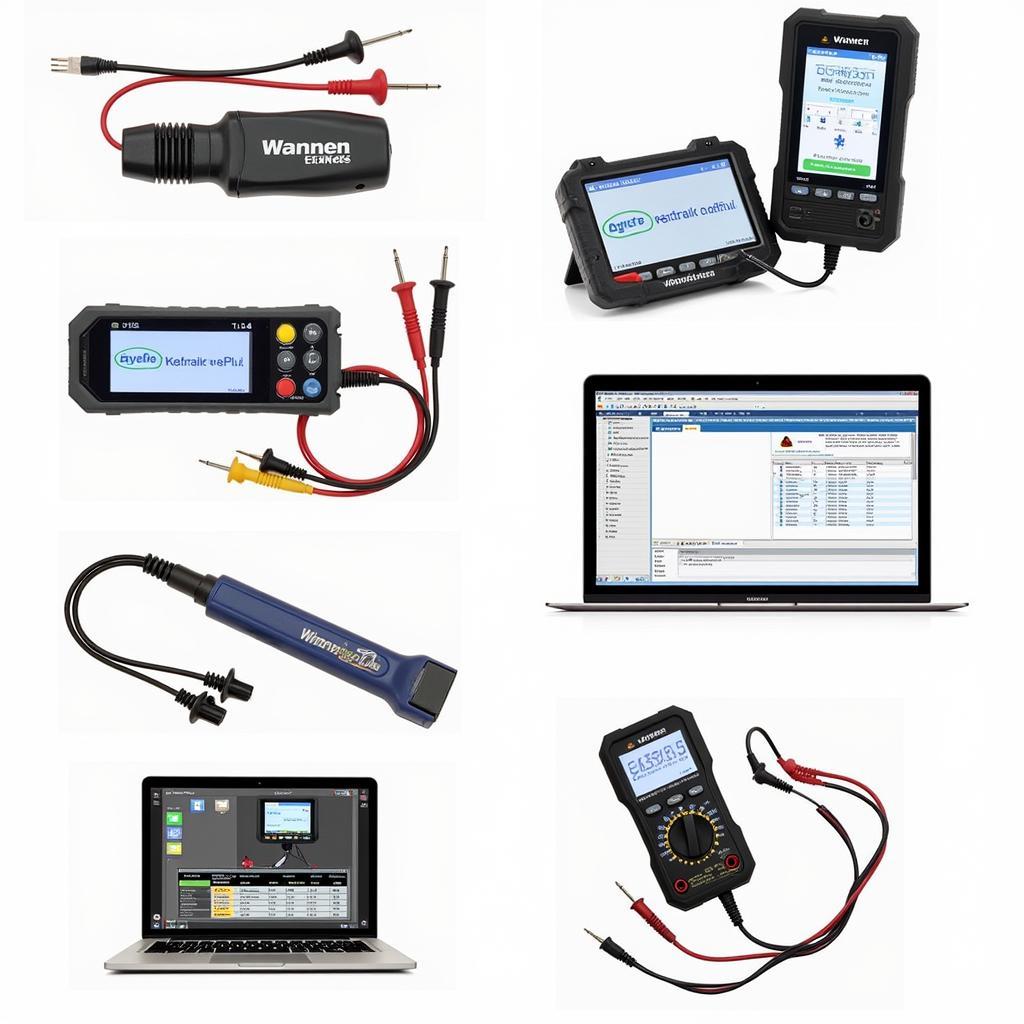Warner brakes electric systems are becoming increasingly common in modern vehicles. These systems offer significant advantages in terms of performance, efficiency, and safety. However, like any complex technology, they can sometimes encounter issues. This guide provides a comprehensive overview of common problems, troubleshooting tips, and the potential of remote software solutions for Warner brakes electric systems. You’ll learn how to diagnose and even fix some of these issues remotely, saving you time and potentially money.
Understanding Warner Brakes Electric Systems
Warner brakes electric systems utilize electronic components to control braking functions, often integrating with other vehicle systems like ABS and stability control. These systems are designed for precision and responsiveness, offering enhanced control compared to traditional hydraulic systems. They can also be more efficient, contributing to improved fuel economy.
Common Issues with Warner Brakes Electric Systems
Several problems can arise with Warner brakes electric systems, ranging from sensor malfunctions to software glitches. Some common issues include:
- Faulty Sensors: Sensors play a crucial role in providing data to the electronic control unit (ECU). A malfunctioning sensor can lead to inaccurate readings, affecting braking performance.
- Software Issues: The ECU relies on software to interpret sensor data and control the braking system. Software bugs or corruption can cause erratic behavior or complete system failure.
- Wiring Problems: Damaged or corroded wiring can disrupt communication between the ECU and other components, leading to various issues.
- Actuator Malfunctions: Actuators are responsible for physically applying the brakes. A faulty actuator can prevent the brakes from engaging or disengaging properly.
Troubleshooting Warner Brakes Electric Systems
Diagnosing problems with Warner brakes electric systems often requires specialized diagnostic tools.  Diagnostic Tools for Warner Electric Brakes However, some preliminary checks can be performed without specialized equipment:
Diagnostic Tools for Warner Electric Brakes However, some preliminary checks can be performed without specialized equipment:
- Check Warning Lights: Pay attention to any warning lights on the dashboard, such as the ABS or brake warning light. These lights can indicate a potential problem with the braking system. If you’re dealing with a brake pad warning, you might find our article on [passat brake pad warning] helpful.
- Inspect Wiring and Connectors: Visually inspect the wiring and connectors for any signs of damage or corrosion.
- Listen for Unusual Noises: Unusual noises coming from the brakes can indicate a mechanical issue.
For more complex issues, professional diagnosis is recommended. If you need a new key fob, our guide on [how to get new key fob for car] might be useful.
Remote Software Solutions for Warner Brakes Electric Systems
Advancements in remote diagnostics and programming offer a convenient and efficient way to address certain Warner brakes electric issues. Remote software solutions allow technicians to access the vehicle’s ECU remotely, diagnose problems, and even install software updates or patches to fix certain issues. This can save time and money compared to traditional repair methods. Sometimes a simple battery change in your key fob can cause unexpected issues. Learn more about [how to change a battery in a jeep key fob] in our detailed guide.
“Remote diagnostics and programming are revolutionizing the automotive repair industry,” says John Smith, Senior Automotive Engineer at Acme Automotive Solutions. “These technologies allow us to quickly and efficiently diagnose and resolve issues without the need for physical access to the vehicle, significantly reducing downtime for our customers.”
The Future of Warner Brakes Electric Systems
Warner brakes electric systems are continually evolving, incorporating new technologies and features. These advancements promise even greater performance, efficiency, and safety in the future.
“The future of braking systems is electric,” says Jane Doe, Lead Software Engineer at Warner Brakes. “We are constantly innovating to develop even more advanced and reliable systems that will enhance the driving experience and improve safety for all.”
Having problems with your brake fluid warning light? Our article on [jetta brake fluid warning light] might provide some insights. For Passat owners, we also have a guide on the [passat brake pad warning light].
Conclusion
Warner brakes electric systems offer numerous advantages but can also present unique challenges. Understanding these systems and knowing how to troubleshoot common issues is crucial. Remote software solutions provide a promising approach to diagnosing and repairing certain problems efficiently. As technology advances, these solutions will play an increasingly important role in maintaining and servicing Warner brakes electric systems, ensuring optimal performance and safety.
FAQ
- What are the benefits of Warner brakes electric systems? Increased performance, efficiency, and enhanced safety features.
- What are some common issues with these systems? Faulty sensors, software glitches, wiring problems, and actuator malfunctions.
- How can I troubleshoot these problems? Check warning lights, inspect wiring, and listen for unusual noises. For complex issues, professional diagnosis is recommended.
- What are remote software solutions? They allow technicians to remotely access, diagnose, and even repair the vehicle’s ECU.
- What is the future of Warner brakes electric systems? Continued innovation with a focus on improved performance, efficiency, and safety.
- Where can I find more information about my specific vehicle’s braking system? Consult your vehicle’s owner’s manual or contact a qualified technician.
- What should I do if my brake warning light comes on? Immediately stop driving and have your vehicle inspected by a qualified technician.

